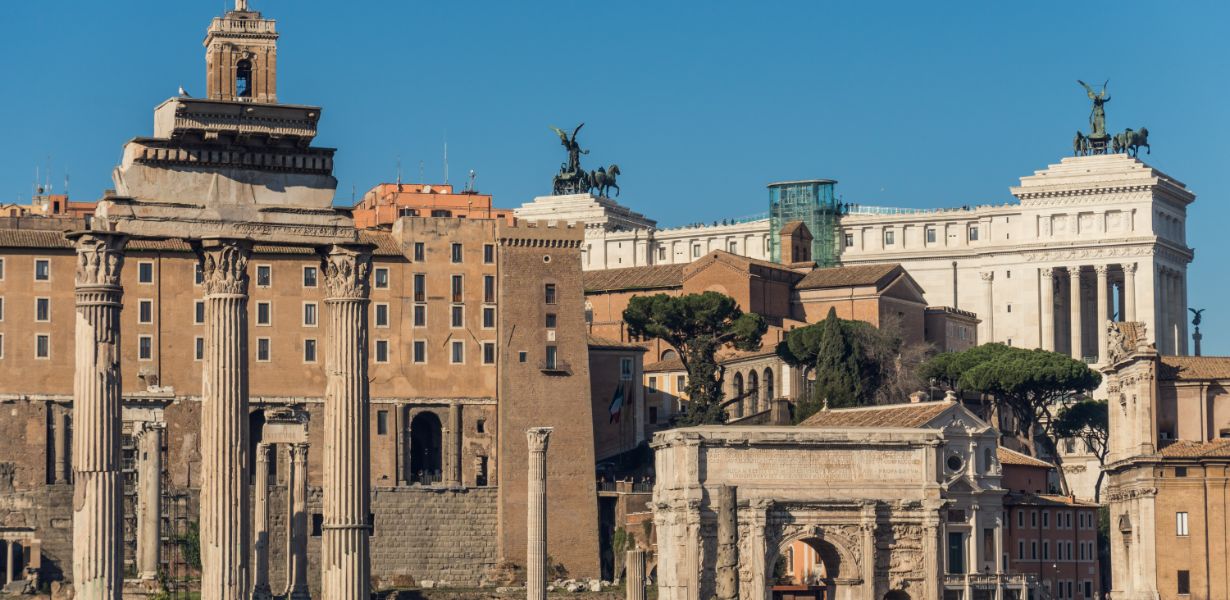
In a world where technology shapes our every move, it's fascinating how it can also breathe new life into age-old traditions. The fusion of ancient ruins and modern tech has opened up a realm of possibilities that we could have only dreamed of in the past. Our journey takes us deep into the heart of these mystical ruins, where the past meets the future, and where tradition and technology intertwine seamlessly.
Unearthing the Past with Augmented Reality (AR)
Ancient Ruins Reimagined: Step into the world of augmented reality, where the past is vividly brought to life. AR technology allows you to explore ancient ruins as they once stood, superimposing digital reconstructions onto the real world. Whether it's the majestic Pyramids of Giza or the mysterious Stonehenge, AR offers a window into the past like never before. Imagine standing before the Colosseum in ancient Rome, witnessing gladiator battles as if they were happening right in front of you. AR not only adds depth to your understanding of history but also elevates the travel experience to a whole new level.
Virtual Reality (VR) Time Travel
A Journey Beyond Time: VR technology is the ultimate time machine, offering a portal to eras long gone. Put on a VR headset, and suddenly you're in Pompeii, just days before the eruption of Mount Vesuvius. You can wander through the ancient city's bustling streets, peek into homes frozen in time, and experience the vibrancy of a lost civilization. For history enthusiasts, VR provides an unparalleled opportunity to immerse themselves in the past, unearthing hidden stories and forgotten traditions.
Digital Archaeology and 3D Scanning
Preserving History Digitally: Traditional archaeological methods are painstaking and time-consuming, but modern technology has transformed the field. 3D scanning and digital archaeology techniques have revolutionized the way we uncover ancient ruins. Researchers can now create highly detailed digital replicas of artifacts and structures, preserving them for future generations. These digital archives not only enhance our understanding of history but also protect valuable heritage from wear and tear.
Smart Audio Guides
A Narration from the Ages: While exploring ancient ruins, a smart audio guide can be your indispensable companion. These devices use GPS technology to provide location-specific information, bringing ruins to life with detailed explanations, stories, and historical context. Imagine walking through Machu Picchu with a knowledgeable guide whispering in your ear, revealing secrets of the Inca civilization.
Drones in Archaeology
The Sky's the Limit: Drones have soared into the world of archaeology, transforming the way we survey and explore ancient ruins. These aerial vehicles capture breathtaking images and videos, providing a bird's-eye view of ruins that was once impossible to obtain.
Drones not only assist in documenting archaeological sites but also aid in preservation efforts and research. They offer a unique perspective that showcases the grandeur and complexity of these ancient marvels.
Artificial Intelligence in Historical Analysis
Cracking the Code of the Past: Artificial intelligence has made significant inroads in deciphering ancient scripts and languages. With the help of machine learning algorithms, researchers can tackle the mysteries of hieroglyphs, cuneiform, and other ancient scripts more efficiently.
This technology not only accelerates the translation process but also enhances our understanding of the beliefs, traditions, and daily life of ancient civilizations.
Wearable Tech for History Enthusiasts
A New Era of Exploration: For those who are passionate about history, wearable technology offers an immersive experience. Smart glasses can provide real-time information about the ruins you're exploring, identify artifacts, and even translate ancient inscriptions on the fly.
Wearables like these bridge the gap between the past and present, making ancient ruins more accessible and engaging.
Reviving Lost Traditions
Bringing Back Ancient Arts: Technology is not just about exploration; it's also about preserving and reviving traditions. Ancient art forms, rituals, and ceremonies that were on the brink of extinction are finding a new lease on life through digital platforms.
From virtual dance performances to online art galleries, technology connects us with the traditions of our ancestors in a meaningful way.
Connecting the Generations
Bridging the Past and Future: As we explore the convergence of ancient ruins and technology, it's crucial to remember that these innovations are not just for the present. They are bridges that connect us with our ancestors and, in turn, pave the way for future generations to understand, appreciate, and cherish our shared heritage.
Final Words
In the age of tech-powered traditions, we find ourselves in a unique moment in history. The fusion of ancient ruins and cutting-edge technology has unveiled a world of possibilities that continually enrich our lives. This harmonious blend not only enhances our knowledge of the past but also revitalizes traditions that have endured the test of time. As we stand on the precipice of a new era, we look back to the ancient ruins with a fresh perspective, embarking on a journey that transcends time and connects us with the profound legacies of our ancestors.
Commonly Asked Questions
1. How does augmented reality work in bringing ancient ruins to life?
Augmented reality (AR) uses digital reconstructions and overlays them onto the real world through smartphone or tablet screens. This technology allows users to explore ancient ruins as they once stood, providing a more immersive and educational experience.
2. What is the significance of digital archaeology in preserving ancient heritage?
Digital archaeology, through techniques like 3D scanning, creates highly detailed digital replicas of artifacts and structures. This not only aids in research but also helps preserve valuable heritage by reducing the need for physical handling and exposure to environmental factors.
3. How do smart audio guides enhance the experience of exploring ancient ruins?
Smart audio guides use GPS technology to provide location-specific information and historical context while exploring ancient ruins. They act as knowledgeable companions, adding depth to the visitor's understanding of the site.
4. How is artificial intelligence used to decipher ancient scripts and languages?
Artificial intelligence, specifically machine learning algorithms, is employed to analyze and translate ancient scripts. This technology accelerates the translation process and contributes to a better understanding of the beliefs, traditions, and daily life of ancient civilizations.
5. How can wearable technology enhance the exploration of ancient ruins?
Wearable technology, such as smart glasses, provides real-time information, identifies artifacts, and translates ancient inscriptions for history enthusiasts while exploring ancient ruins. It offers a more interactive and informative experience for visitors.





